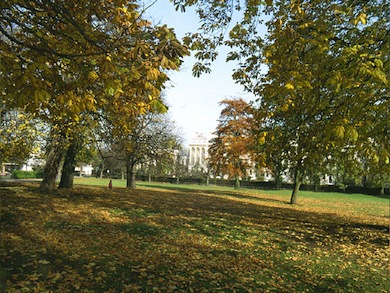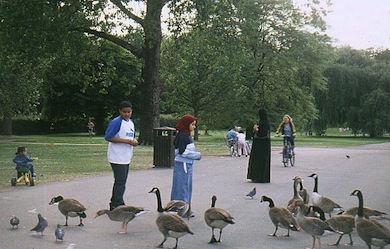Regent’s Park is one of the most varied of the central Royal Parks. Thanks to its size and the diversity of habitats, it has a wide range of breeding birds despite its central location. Habitats include the many mature parkland trees, a small enclosed wood and an ornamental lake, as well as an area specifically managed for wildlife in the north-west of the park. The park also features more formal areas, such as the Queen Mary Gardens and the Rose Gardens. Adjacent to the park is London Zoo, and the Regent’s Canal.Regent’s Park won a Green Flag Award again for 20089. CHP HealthWalks and South Westminster Healthy Walks projects use this site both Walking the Way to Health (WHI) schemes; see links for details.
Local Wildlife Site
Accessible Sites of Importance for Nature Conservation
Regent's Park
Borough: Camden, Westminster
Grade: Metropolitan
Access: Free public access (all/most of site)
Area: 132.06 ha
Description
Wildlife
Annually over 100 species of birds are noted in or over the park, and more than 200 have been noted since record-keeping began in the mid 19th century. Nesting in the mature trees are tawny owl, green woodpecker and kestrel, while nearer the ground are robins, tits, thrushes and blackbirds. Many wintering and migrating birds can also be observed. The heronry on one of the islands in the boating lake is one of London's largest breeding colonies, with over 20 nesting pairs each year. The lake itself supports breeding wild pochards alongside the captive wildfowl collection. Reed warblers arrive in the spring to breed here also. Various wetland enhancements have recently extended the reedbed areas.The park also supports many butterflies and moths, thanks again to the diversity of the habitats. Interesting butterflies include holly blue, marbled white and the white-letter hairstreak. Dragonflies are drawn to the water areas, and at least nine species have been recorded. A large number of spider and beetle species have also been recorded.Facilities
Information; car parking; disabled facilities; toilets (including some with disabled facilities and some for children); cafes & refreshments; playground; open- air events.
View across Regent’s Park © Ian Yarham

Children feeding the wildfowl in Regent’s Park © Jan Hewlett
Feedback
Have a question or a comment for this site, or notice anything missing or out of date? Please contact us.
